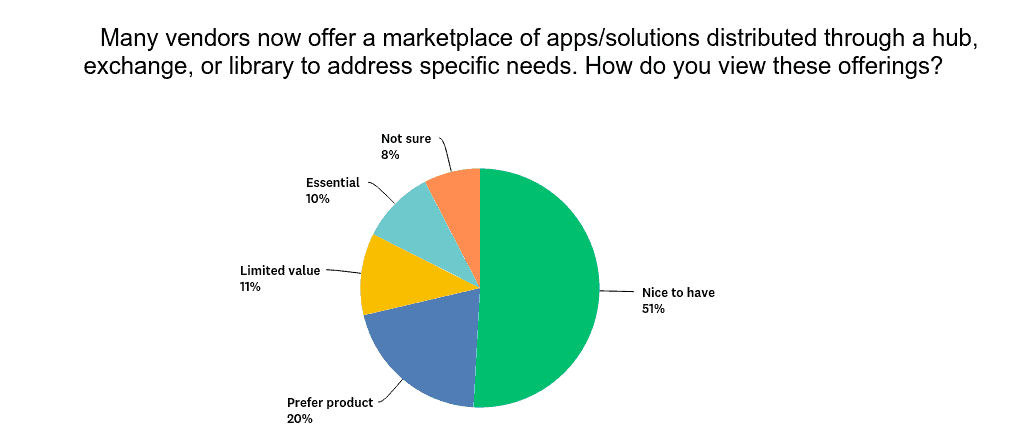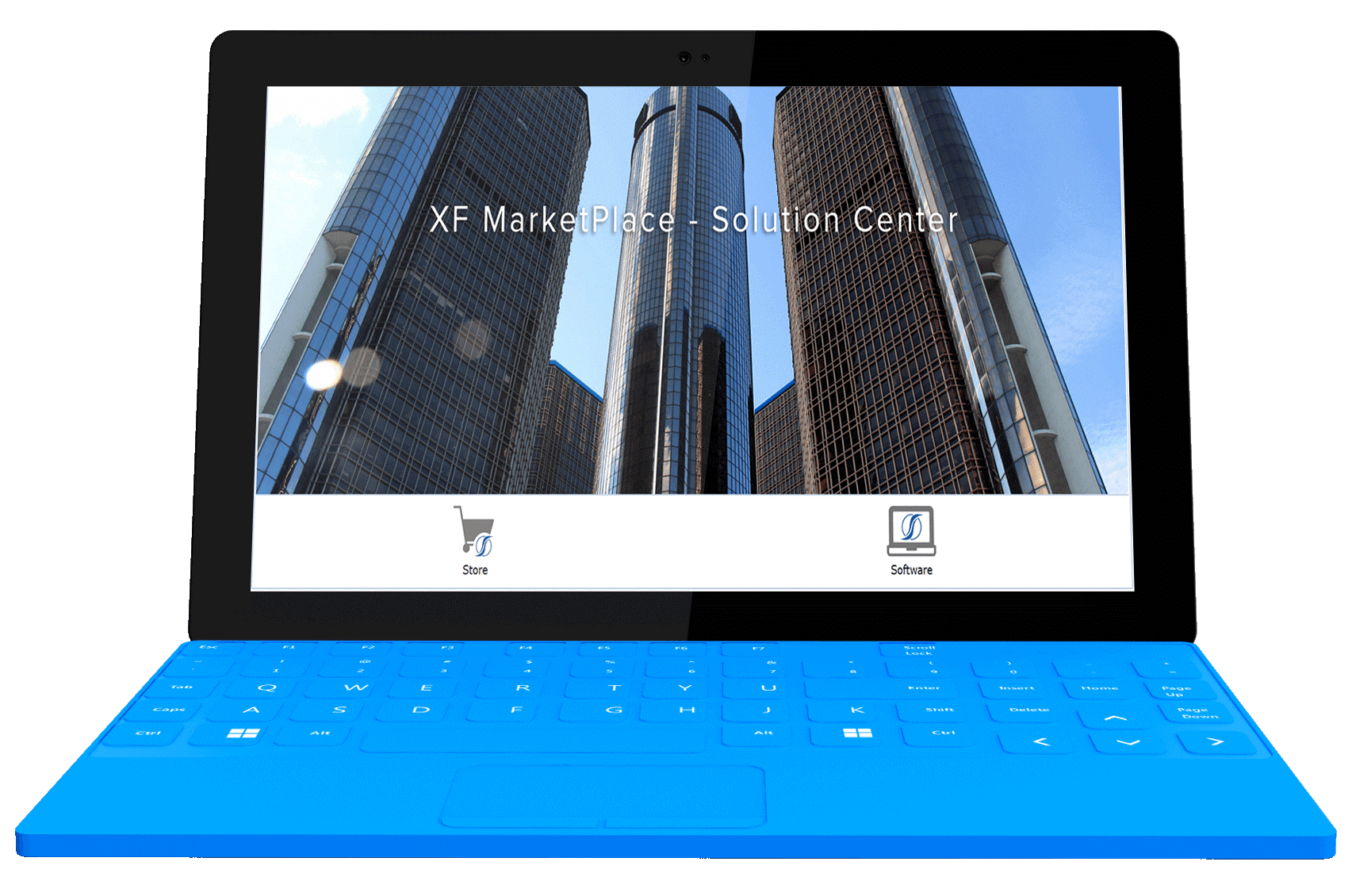Most vendors today offer something they refer to as a library, exchange, hub, or marketplace of solutions. These offerings are designed to augment the vendor’s standard products and services. The solutions themselves are developed by the vendor, their partners, or in some cases other users. The main goals, according to the vendors, are to expand the ways a user can benefit from their products and accelerate time to value. In most cases, the main beneficiary of the value offered by these solutions is the vendor, although there are some notable exceptions, such as OneStream Software.
Let’s take a closer look at what these marketplaces really offer. They are modeled after the app stores offered by Apple, Google, and Microsoft. The intent is to enable users to instantly download free or fee-based apps to extend the value of their existing products. User familiarity with this approach is a double-edged sword: they immediately understand how it works and the value proposition, unfortunately their expectations as to what they will be getting are often not met.
Unlike the app stores that offer relatively polished and complete solutions that are usable as soon as download is complete, the performance management vendor marketplaces rarely come close to delivering a similar experience. What they are often getting is a framework, a starter kit of sorts. Based on their experiences so far, most end users are not impressed. In our 2018 BPM Pulse Survey the majority viewed this approach to delivering solutions as ‘nice to have’, very few found it ‘essential’. Some respondents even preferred the old school model of actually adding new capabilities to the core product itself.
 Source: BPM Partners’ 2018 BPM Pulse Research Study
Source: BPM Partners’ 2018 BPM Pulse Research Study
All of this misses the core point: when done right, these libraries can provide tremendous benefits. They have the potential to dramatically expand the capabilities of a product you already own, often at little to no additional cost. The process can be easy and doesn’t require IT to upgrade everyone to a new version of the core product with the new features. It offers instant gratification – click, download, use. The value of your product is enhanced with additional areas being addressed and should result in greater usage within Finance and throughout the company. Who wouldn’t see this as ‘essential’? Answer – probably those burned by vendors who have poorly implemented the concept.
In many cases the drive for creating these solution libraries in the first place came not from customers, not from product development, but from the vendor’s marketing department. They saw these solution libraries as a way to highlight what is possible with their product. So, if they wanted to show that their product could be used for revenue planning, for example, they would list a revenue planning app in their solution library. In most instances what the user got was a simple model that a consultant put together showing how you could potentially use the product to do revenue planning. It did not add a finished revenue planning application to your product. It did not offer a revenue planning model that was easily configurable to your requirements. It really was an example, something that should probably fall under the heading of enhanced documentation.
Vendors aren’t the only ones to develop solutions for their marketplaces, their partners get involved as well. Most of the partner apps are not free, and in many cases are not even downloadable. If you are interested, you are told to contact the partner directly. The goal of this class of solutions is often to sell the partner’s services. The app is a way for a partner to demonstrate where they have expertise. So for example, if they want to show they can help a customer of the vendor’s product set up IFRS 16 Lease Accounting, , they will offer a lease accounting app. Even in the case where there is actual product it will still probably require a significant amount of the partner’s consulting assistance to implement.
User-developed solutions in these marketplaces are still relatively rare. Like most other apps they are really just examples – one user showing other users how they figured out to accomplish something. While it is useful as extended documentation, there is the question of quality. Is their example the best, most efficient way to accomplish the task, or just the way they happened to stumble into?
Does all of this mean solution libraries should be ignored and never used? Not at all. If you go in with the appropriate expectations they can still provide some benefits, although not as promised. The good news though is that there are exceptions. Some vendor marketplaces, actually deliver what they promise: complete solutions that expand the ways users can benefit from their products. It is important these vendors don’t get lost in the noise.
One example is OneStream Software. The OneStream XF MarketPlace offers actual  solutions that customers can download, configure and deploy to extend the value of the OneStream platform, often with limited services required. The solutions include database tables, meta data, dashboards, forms and reports that get installed into the platform from a zip file. There are over 40 solutions currently available including Account Reconciliations, People Planning, and Task Manager.
solutions that customers can download, configure and deploy to extend the value of the OneStream platform, often with limited services required. The solutions include database tables, meta data, dashboards, forms and reports that get installed into the platform from a zip file. There are over 40 solutions currently available including Account Reconciliations, People Planning, and Task Manager.
How can users identify and seek out these providers? There are two main ways, the first of which is to take a look at the vendor’s marketplace prior to purchasing their performance management products. The descriptions should give you an idea of how complete they are. The words model, starter kit, framework, accelerator are key indicators that these are not self-contained ready to go offerings. Non-downloadable apps that require you to speak the developer/partner are also a concern. Secondly, talk to the vendor’s customers. Have they ever used solutions from the vendor’s marketplace? Did it work for them as expected? In our 2019 BPM Pulse survey we will be adding questions about the use of these marketplaces and we will make vendor specific data available to further help you identify the ones that deliver as promised.
We are in the early stages of this approach to delivering extended functionality. The model and approach are great. The execution has not been. Give it time though. The few vendors that get the formula right will be rewarded with happy, referenceable customers. In time other vendors will follow suit. As the use of performance management continues to expand beyond Finance and even deeper within Finance itself, these marketplaces are the most practical way for the vendors and their products to keep up.
Visit the OneStream web site to learn more about the OneStream XF MarketPlace.
Get Started With a Personal Demo



